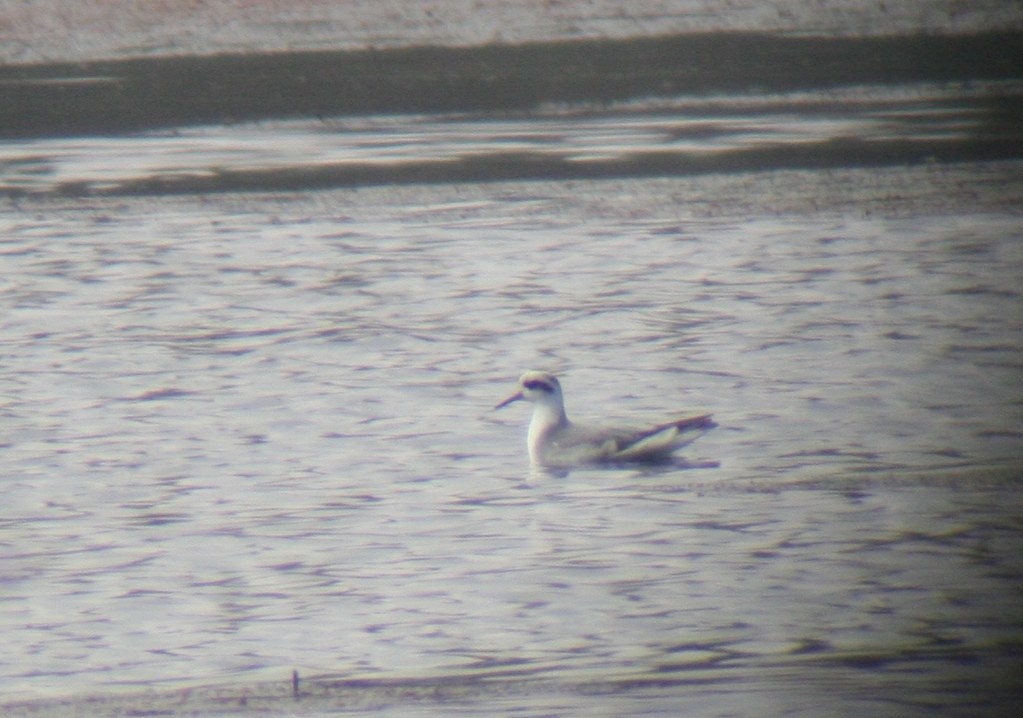Well! All that changed today when my friend Matt called me this morning to see if we could go birding. Today we had the day off (why? I don't know. It's hardly iced over anymore) so we drove to Pee Dee NWR, which I had posted about before. It had started off fairly well, with me FINALLY seeing some Fox Sparrows, a bird that I hadn't seen in a couple of years.
 |
| I almost forgot how pretty you are! |
We looked for bobwhites, which can be found there, but fell short. We found some Wood Ducks on the main pond, with a nice mix of sparrows and Winter Wren, Hermit Thrush, and a Brown Creeper. The boardwalk through the forest got us most of our winter passerines. I thought I saw a Bufflehead out on the water, but lost it as I set up my scope.
As we continued up the drive, keeping an eye out for any ducks, grebes, or snipe, we paused to watch the Wood Ducks take flight. I spotted something small and white on the water, and pointed it out. A small white bird was floating on the water, Our minds first jumped to a Forster's Tern or Bonaparte's Gull. But this bird was swimming, and bobbing its head! I had seen Bonaparte's swim in the water, but this was no gull...
So what was it?
A phalarope!
We thought it was a Red-necked, as it seemed small and had a thin bill. I've been told it's a Red. Either way, it would be a lifer, but it would be nice to know exactly what it is. (Edit: It's a Red and do NOT count on your Sibley's for phalarope ID. Terrible, terrible!)
Phalaropes are pretty uncommon in North Carolina, with the only reliable way to see one being on a pelagic. They are much rarer inland, where they normally pop up after storms. With the cold front and wintry weather, it's plausible that this bird got pushed south and inland. It's an amazing stroke of luck that Matt and I found it; if it wasn't for the weather, school, location, etc. we would've never found it!
I'll give an update when a verdict is reached, but it's probably Red.
Edit: And yes, it's a Red. Sibley's was the only reference material we had, as Matt's phone died, taking the digital Peterson's with it. Red-neckeds have a crazy mix of darks and lights on their backs, while Reds are the solid pale gray. In Sibley's, the two nonbreeding birds look almost exactly alike, which caused our confusion.
Edit: And yes, it's a Red. Sibley's was the only reference material we had, as Matt's phone died, taking the digital Peterson's with it. Red-neckeds have a crazy mix of darks and lights on their backs, while Reds are the solid pale gray. In Sibley's, the two nonbreeding birds look almost exactly alike, which caused our confusion.


Looks good for Red Phalarope. Very nice bird.
ReplyDelete